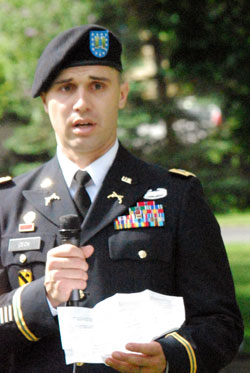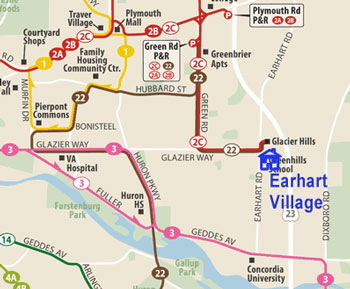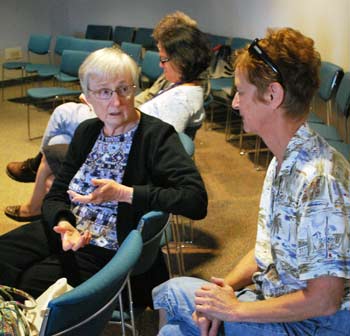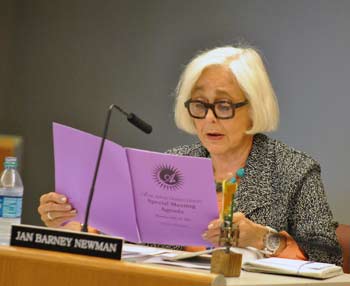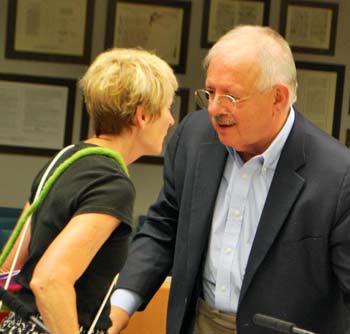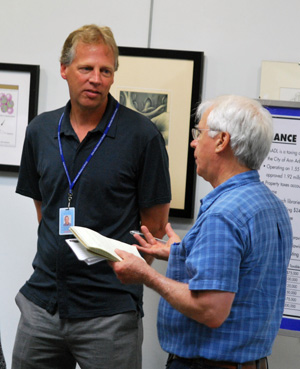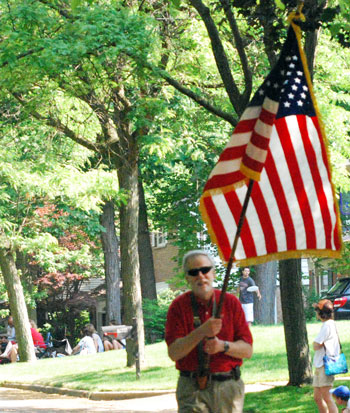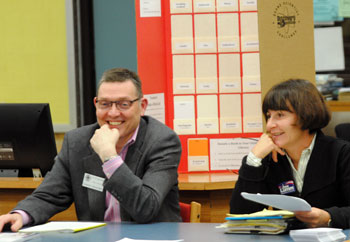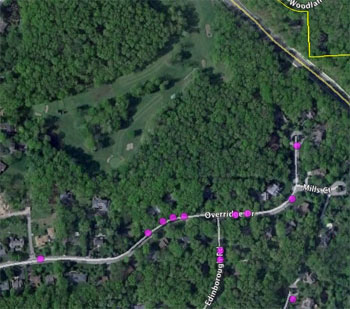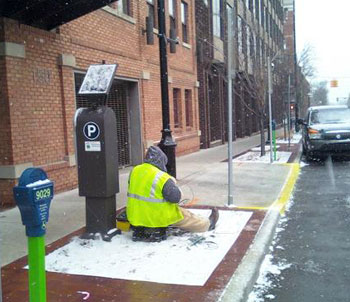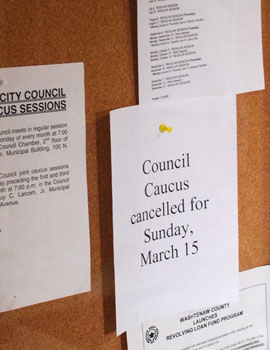Ann Arbor planning commission meeting and work session (Sept. 10, 2013): Planning commissioners acted on a change to the city’s master plan, by approving an update to the non-motorized transportation plan.
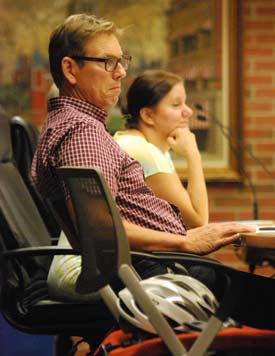
Architect and Ann Arbor planning commissioner Ken Clein shows evidence of his non-motorized transportation – his bicycle helmet. In the background is commissioner Diane Giannola. (Photos by the writer.)
Items in the city’s master plan must receive approval from both the planning commission and the council, so councilmembers will be asked to vote on the update as well. [.pdf of draft 2013 non-motorized transportation plan update]
The 79-page document includes sections on planning and policy, as well as recommendations for short-term and long-term projects, such as bike boulevards, crosswalks, sidewalks and larger efforts like the Allen Creek greenway and Border-to-Border Trail. An additional document – over 100 pages – outlines the update’s public participation process, including emails and comments received during public meetings.
Eli Cooper, the city’s transportation program manager, briefed commissioners on this update, and much of their discussion centered on how to prioritize and implement the items in the plan – especially the funding for sidewalk “gaps.”
Cooper pointed out that implementation relies on including these projects in the city’s capital improvement plan (CIP), which the planning commission reviews and recommends for approval each year. City planning manager Wendy Rampson suggested that the commission could reconvene its CIP committee to talk about these issues.
In its other item of business, commissioners unanimously recommended approval of a proposed expansion to the U-Haul business at 3655 S. State St., south of the I-94 interchange. It will be forwarded to the city council for consideration.
The relatively short meeting – lasting about 90 minutes – was followed by a working session focused on Michigan’s “Redevelopment Ready Communities” program, in which the city of Ann Arbor is participating. [.pdf of program overview]
Rampson described the program as a tool to help communities put in place elements that would allow redevelopment to happen. Those things include master plans that are clear about what community expectations are for new developments, and zoning needs to reflect those expectations in a very specific way. It means that when developers look at a specific property, they’ll be able to know exactly what they can do.
If the city completes the state’s evaluation successfully, Rampson said, then it would be certified as a “Redevelopment Ready” community. This is a relatively new program, but the state has indicated that communities with this certification could receive priority points on grants from the Michigan Economic Development Corp. and the Michigan State Housing Development Authority (MSHDA).
Before the staff can proceed, Rampson explained, the city council must pass a resolution stating that the city can participate. On Oct. 14, the issue will be on the agenda for a joint city council and planning commission working session, although the main topics will be the current downtown zoning review and R4C/R2A zoning revisions.
Commissioners discussed how this program might be received by the community, with Sabra Briere – who also serves on the city council – pointing out that for some people “redevelopment ready” sounds like “tear down all the old stuff.” She noted that development is a very sensitive topic right now.
The issue of development also arose during a brief update from Rampson about the ongoing downtown zoning review. The consultants who are leading this effort – Erin Perdu and Megan Masson-Minock – have put together a workbook that they’ve been presenting at public forums. [.pdf of workbook] The same information is part of an online survey that’s underway through Sept. 17. A final public forum to review all of the feedback gathered so far will be held on Thursday, Sept. 19 starting at 7 p.m. at Workantile, 118 S. Main in downtown Ann Arbor.
The goal is to review the consultants’ recommendations at an Oct. 8 planning commission working session, and then take action on those recommendations at the commission’s Oct. 15 regular meeting. At that point, the recommendations will be transmitted to the council, Rampson said. [Full Story]
